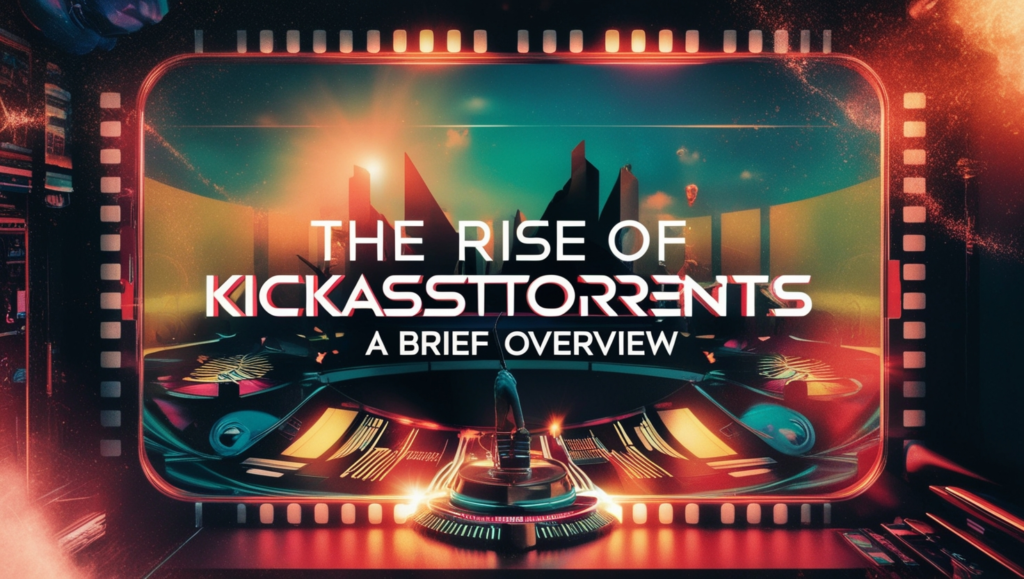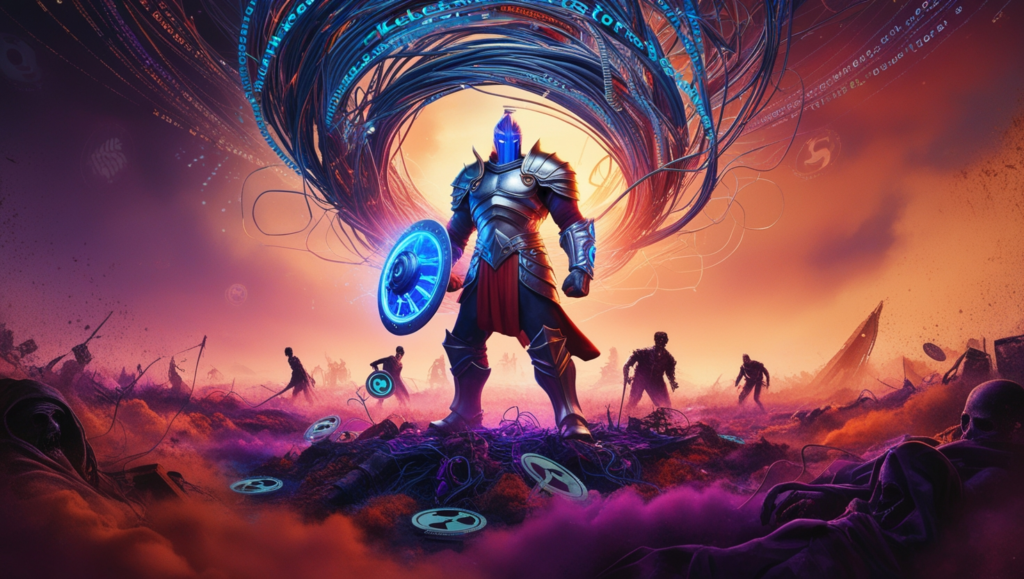KickassTorrents (KAT) emerged as one of the most popular torrent sites in the early 2010s, significantly shaping the online piracy landscape. It provided users with an extensive library of pirated movies, TV shows, software, music, and more, attracting millions of visitors daily.
The site’s user-friendly interface and vast content library made it a go-to destination for torrent enthusiasts worldwide. KickassTorrents quickly became a central hub in the torrenting community, competing with other giants like The Pirate Bay and 1337x in terms of traffic and influence.
However, its dominance didn’t go unnoticed by authorities. In 2016, KickassTorrents faced a major blow when its founder, Artem Vaulin, was arrested by U.S. law enforcement. This event led to the temporary shutdown of the site, which left a void in the piracy world.
Many KAT users turned to alternative torrent sites, but the legal action against KAT marked a shift in how the entertainment industry and law enforcement tackled piracy. KickassTorrents’ demise demonstrated the vulnerabilities of such sites and showed how even the most successful piracy hubs could be taken down by coordinated efforts from international authorities.
The Rise of KickassTorrents: A Brief Overview
KickassTorrents (KAT) was founded in 2008, quickly becoming one of the most prominent torrent sites on the internet. With a sleek, simple interface and a vast library of pirated content, KAT offered everything from movies and TV shows to music, software, and games. It gained a reputation for its speed and reliability, making it the go-to site for users seeking free, easy access to digital media.
The site’s rise to prominence was fueled by its strong community and consistent content uploads, positioning it as a key player in the torrenting world, often competing directly with other popular platforms like The Pirate Bay.

By 2014, KickassTorrents had become the largest torrent site globally, with millions of users visiting the site daily. Its popularity continued to soar, aided by its active community and a large database of torrents, many of which were uploaded by trusted users.
Despite legal challenges and constant pressure from copyright holders, KAT managed to stay afloat, adapting to shifting online piracy trends and maintaining a loyal user base. The site’s ability to evolve and evade authorities made it a symbol of the resilience of online piracy, attracting millions of visitors from around the world.
However, KAT’s success was not without consequences. The site faced constant scrutiny from governments and entertainment industry groups who viewed it as a major threat to digital media sales. By 2016, KickassTorrents had become a target for law enforcement, culminating in the arrest of its founder, Artem Vaulin.
Also Read: Business Purpose Only License
This marked the beginning of the end for the site, as it was seized by U.S. authorities, leading to its eventual shutdown. Despite this, the legacy of KickassTorrents lives on, influencing future torrent sites and continuing to be a touchstone in the ongoing battle between piracy and the media industry.
KickassTorrents and the Global Piracy Surge
Table 1: Factors Contributing to the Popularity of KickassTorrents
| Factor | Description | Impact on Piracy |
| Extensive Library | Hosted a wide range of pirated movies, TV shows, music, and software. | Made diverse content easily accessible, boosting piracy rates. |
| User-Friendly Design | Intuitive interface and advanced search features. | Attracted users from varying levels of technical expertise. |
| Active Community | Users actively uploaded, reviewed, and shared torrents. | Ensured consistent availability of high-quality pirated files. |
| Global Accessibility | Mirrors and proxies allowed users worldwide to access the site, bypassing regional restrictions. | Enabled piracy to spread across international markets. |
Table 2: KickassTorrents’ Influence on Online Piracy Trends
| Trend | Details | KAT’s Role |
| Increased Torrenting Activity | Significant rise in global torrent downloads during KAT’s peak years. | Served as a central hub for pirated content. |
| Emergence of VPN Use | Users began adopting VPNs to bypass geo-blocks and avoid legal risks. | KAT’s legal challenges prompted a shift towards privacy tools. |
| Competition Among Torrent Sites | Other sites like The Pirate Bay enhanced features to rival KAT. | Pushed innovation in the torrenting ecosystem. |
| Piracy as a Cultural Phenomenon | Piracy became mainstream, reaching casual users. | KAT’s accessibility normalized torrenting for everyday users. |
How KickassTorrents Shaped the Torrenting Community
User-Centric Features
- KAT introduced a sleek, user-friendly interface with advanced search filters, making torrenting accessible to a broader audience.
- Ratings, comments, and verified uploader badges promoted trust within the community, ensuring high-quality torrents.
A Vibrant User Community
- KickassTorrents thrived on its active community, where users shared torrents, offered feedback, and provided tech support to one another.
- The platform fostered collaboration, helping to popularize niche content and rare files.
Global Reach
- By offering mirror sites and proxy services, KAT ensured accessibility worldwide, even in regions with heavy censorship.
- This global network brought together a diverse group of users, further strengthening the torrenting ecosystem.
Standardization in Torrenting
- KAT set benchmarks for other torrent sites, from site design to content organization, inspiring rivals to improve their offerings.
- Its tagging and categorization systems became industry standards, enhancing user experience across the torrenting landscape.
Innovation in Piracy Techniques
- KAT encouraged the use of VPNs and proxies as a response to legal threats, leading to the widespread adoption of these privacy tools within the community.
- The platform popularized new methods of evading censorship, which are still widely used in torrenting today.
Cultural Impact
- KickassTorrents normalized torrenting for casual internet users, making piracy a mainstream phenomenon.
- Its shutdown became a turning point, sparking discussions about digital rights, copyright enforcement, and alternative file-sharing methods.
Legal Battles and the Shutdown of KickassTorrents
Increased Legal Scrutiny
- By 2014, KickassTorrents became the world’s most-visited torrent site, drawing the attention of copyright enforcement agencies globally.
- Entertainment industries, including the Motion Picture Association of America (MPAA), labeled KAT a significant contributor to revenue losses.
Targeted Investigations
- Authorities from the U.S., in collaboration with multiple countries, launched a detailed investigation into KAT’s operations.
- Payment processing methods, including ad revenue and digital currencies, were traced to identify key operators.
Arrest of Artem Vaulin
- In July 2016, KAT’s alleged founder, Artem Vaulin, was arrested in Poland on charges of copyright infringement and money laundering.
- U.S. authorities filed an extradition request, claiming Vaulin caused billions in losses to content creators.
Website Seizure
- Following Vaulin’s arrest, the U.S. Department of Justice seized the primary KickassTorrents domain and several mirror sites.
- This coordinated effort effectively dismantled KAT’s infrastructure, leading to its shutdown.
Impact on Users and the Torrenting Community
- Millions of users worldwide were left scrambling for alternative platforms after KAT’s closure.
- The shutdown prompted the rise of clone sites, proxy servers, and competitors like 1337x and YTS.
Legal Precedent
- The KAT case became a landmark in the fight against online piracy, demonstrating how international cooperation could target major players.
- It reinforced the risks associated with running and using such platforms, driving some users to more covert methods like VPNs and decentralized file-sharing networks.
Legacy of KickassTorrents
- Despite the shutdown, KAT’s influence persisted through mirror sites and its impact on torrenting culture.
- The legal battle highlighted the challenges of balancing copyright enforcement with user privacy and internet freedom.
The Aftermath: What Happened to KickassTorrents Users?
The shutdown of KickassTorrents (KAT) in 2016 left millions of its users searching for alternatives. As one of the most popular torrent platforms, KAT had built a massive, loyal community that suddenly found itself without a central hub for accessing pirated content.
Many users quickly migrated to other well-established torrent sites like The Pirate Bay, 1337x, and RARBG. Some turned to clone sites and mirrors that mimicked KAT’s interface, though these often came with security risks, including malware and phishing attacks.

The closure also accelerated the adoption of privacy tools like VPNs (Virtual Private Networks) and encrypted browsing among torrent users. The legal action against KAT highlighted the risks of being tracked by authorities, prompting a shift towards more covert methods of accessing torrents. Additionally, some users began exploring decentralized alternatives, such as peer-to-peer file-sharing platforms that operated without central servers, making them harder to shut down.
For the torrenting community as a whole, the loss of KickassTorrents was both a setback and a catalyst for innovation. While many users missed KAT’s user-friendly interface and active community, its closure served as a wake-up call, encouraging safer browsing practices and diversification of torrent sources.
The fallout also contributed to the rise of streaming platforms like Popcorn Time, as users sought easier ways to access content without relying on traditional torrenting methods. Despite the challenges, the community adapted, demonstrating its resilience in the face of increased legal pressures.
KickassTorrents vs. Other Torrent Sites: A Comparative Impact

Popularity and User Base
KickassTorrents (KAT) stood out for its massive global user base, consistently ranking as one of the top torrent sites. Its seamless interface and extensive library made it particularly appealing, surpassing competitors like The Pirate Bay in traffic during its peak years. While sites like 1337x and RARBG catered to specific niches, KAT offered something for everyone, earning its place as a central hub for the torrenting community.
User Experience and Features
KAT’s intuitive design and advanced features, such as verified uploaders and detailed torrent descriptions, elevated the user experience. In contrast, other platforms like The Pirate Bay focused more on simplicity and raw functionality. KAT’s focus on community engagement, including comments and ratings, fostered trust and interactivity, making it a favorite for users who valued quality and reliability.
Legal Troubles and Shutdowns
While most major torrent sites faced legal challenges, KAT’s prominence made it a prime target for authorities. Its 2016 shutdown marked one of the largest anti-piracy actions in history. Meanwhile, other sites like The Pirate Bay, which had weathered multiple domain seizures and temporary closures, continued to operate, albeit with disruptions. KAT’s shutdown had a more profound and immediate impact, scattering its user base and reshaping the torrenting landscape.
Content Library and Accessibility
Compared to other torrent sites, KAT was renowned for its vast and diverse content library, which included rare files and high-quality uploads. Its global reach, supported by proxy and mirror sites, ensured accessibility even in regions with heavy censorship. While The Pirate Bay had a longer legacy and 1337x gained traction with specialized categories, KAT’s extensive catalog made it the go-to option for many.
Legacy and Influence
Despite its shutdown, KAT’s legacy lives on through clone sites and its influence on torrenting culture. It set new standards for usability and community-driven features that competitors adopted. Sites like YTS and RARBG benefited from KAT’s absence, filling the void left by its closure. However, no single platform has fully replaced KAT’s impact, highlighting its unique role in the history of online piracy.
The Evolving Nature of Online Piracy Post-KickassTorrents
The shutdown of KickassTorrents (KAT) in 2016 marked a significant turning point in the evolution of online piracy. With one of the most popular platforms eliminated, users adapted by diversifying their methods of accessing pirated content.

Many transitioned to other torrent sites like The Pirate Bay, 1337x, and YTS, while some embraced new technologies such as decentralized peer-to-peer networks. These platforms offered greater anonymity and resilience against takedowns, making them harder to regulate. The rise of streaming services like Popcorn Time also became prominent, offering users instant access to pirated media without the need to download files.
At the same time, anti-piracy efforts became more aggressive and sophisticated. Governments and copyright holders increased their focus on blocking domains, suing users, and pushing internet service providers to throttle or monitor torrenting activity. In response, many users turned to VPNs and encrypted connections to maintain privacy and bypass regional restrictions.
The post-KAT era has been characterized by a constant cat-and-mouse game between piracy platforms and enforcement agencies, driving innovation on both sides. This evolution highlights the resilience of the piracy community and the ongoing challenge of curbing unauthorized content distribution in a digital-first world.
Future of Torrenting: Lessons Learned from KickassTorrents’ Legacy
The legacy of KickassTorrents (KAT) offers valuable lessons for the future of torrenting. KAT’s success was rooted in its user-centric approach—offering a vast library of content, intuitive features, and a strong community-driven ecosystem. However, its downfall highlighted the vulnerabilities of centralized platforms, as authorities targeted its infrastructure and leadership.
The torrenting community has since adapted by embracing decentralization and anonymity. Technologies like blockchain-based file sharing and distributed networks are paving the way for platforms that are harder to shut down, suggesting that the future of torrenting may shift toward more resilient and private systems.
At the same time, KAT’s story underscores the growing risks for torrent sites and their users. As copyright enforcement becomes increasingly aggressive, reliance on tools like VPNs, encryption, and secure browsers is no longer optional but essential.
The rise of legal streaming platforms has also changed user behavior, offering convenience and affordability as alternatives to piracy. Moving forward, the torrenting ecosystem will likely need to balance innovation with caution, learning from KAT’s rise and fall to navigate an era of heightened scrutiny and evolving technologies.
FAQs
What was KickassTorrents?
KickassTorrents (KAT) was a popular torrent site offering pirated movies, TV shows, software, and more to millions of global users.
Why was KickassTorrents shut down?
KAT was shut down in 2016 after its founder, Artem Vaulin, was arrested for copyright infringement and money laundering.
Are there alternatives to KickassTorrents?
Yes, sites like The Pirate Bay, 1337x, and YTS emerged as popular alternatives, although they also face legal scrutiny.
Is torrenting illegal?
Torrenting itself isn’t illegal, but downloading copyrighted content without permission is against the law in most countries.
How has online piracy changed after KAT’s shutdown?
Users have shifted to decentralized platforms, VPNs, and streaming services, making piracy more discreet and harder to regulate.
Conclusion
The story of KickassTorrents (KAT) is a testament to both the resilience and fragility of the torrenting ecosystem. At its peak, KAT was a symbol of convenience and accessibility for millions of users worldwide, offering a vast library of content while fostering a strong community.
Its innovative features and user-focused design set benchmarks for other platforms, shaping the broader torrenting culture. However, its meteoric rise also made it a prime target for legal action, culminating in a dramatic shutdown that underscored the risks faced by such platforms.
Looking ahead, the legacy of KickassTorrents will continue to influence the evolution of online piracy. While its demise marked the end of an era, it also sparked innovation and diversification within the torrenting landscape.
As digital copyright enforcement intensifies, the balance between accessibility and legality will remain at the forefront of the piracy debate. KAT’s rise and fall remind us that the battle between creators and unauthorized distributors is as much about technological evolution as it is about cultural and economic forces.



